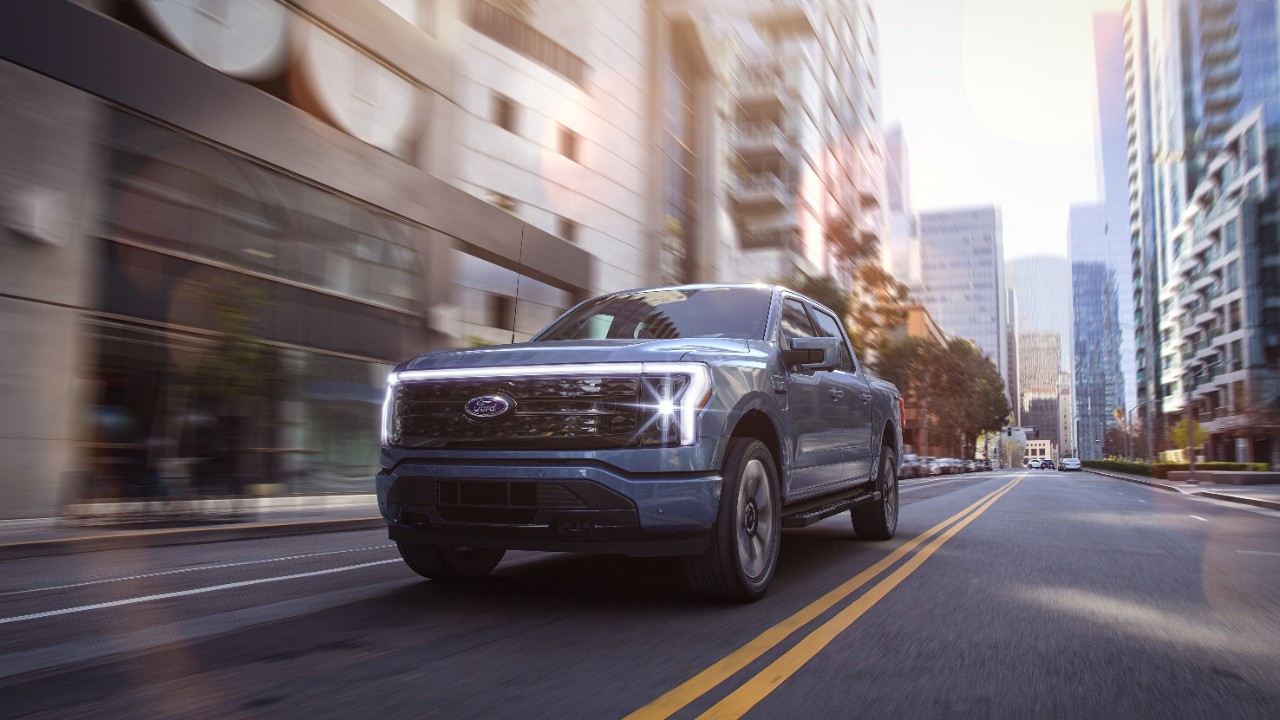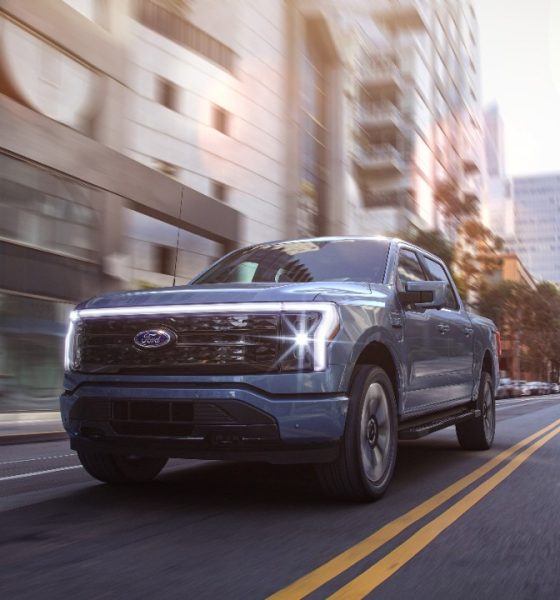Ford has announced that it has signed a memorandum of understanding (MOU) with LG and KOÇ Holdings to construct a battery production facility in Ankara, Turkey.
While Ford has outlined a massive electric production overhaul in North America, it has yet to do so in Europe. However, as Europe has officially mandated that combustion engines be phased out by 2035, the Blue Oval is now rededicating to the market and now plans to construct a battery production facility in the area to do so.
With construction starting this year, Ford states that its new plant with LG and KOÇ Holdings will be capable of producing 25GWh of battery cells annually when it opens in 2026. After opening and establishing production, Ford plans to eventually ramp this production facility, “potentially reaching 45GWh” annually, making it one of the largest battery plants on the continent.
LG has already worked with Ford Europe to supply the automaker with batteries at its assembly plant in Poland. However, this would be the Korean battery maker’s first JV facility with Ford. The other MOU partner, KOÇ Holdings, a Turkish industrial conglomerate, has worked with Ford at the automaker’s assembly locations in Turkey.
“Ford continues to ramp up our electric vehicle plans as we scale to be a leader in the electric vehicle revolution. We are delivering on the commitment to produce batteries in the same region where we build electric vehicles. Establishing the new joint venture with LGES and KOÇ Holding will lay a solid foundation that is fundamental to building a thriving electric vehicle future for Ford in Europe,” said Lisa Drake, Ford VP of EV Industrialization.
Ford did not mention how much the Turkish facility would cost, nor was the battery chemistry of the plant defined. However, with the company introducing LFP batteries to its vehicles in the coming months, this new Turkish facility could supply vehicles for the European market.
Compared to North America, where Ford is constructing 10 new production locations, including two massive battery cell factories, Europe has not received the same treatment. In fact, earlier this month, Ford announced that it would be slashing jobs at some of its largest European production facilities as the company continues to electrify.
As for LG, this is far from the only battery plant that it is creating in conjunction with an automaker and not even the only one being constructed in Europe. LG has perhaps worked most closely with General Motors, which collaborated on establishing a battery joint venture company, Ultium. The Korean battery giant is constructing four facilities in North America as part of that partnership. Outside of that partnership, LG already operates six of its own battery factories globally, totaling 200GWh of capacity.
“Our long-time business relationship with Ford is the result of our commitment to deliver unmatched product competitiveness, stable yields, and global operational expertise, made possible by our extensive knowledge accumulated through pre-emptive investments in global markets,” said Youngsoo Kwon, CEO of LG Energy Solution.
To produce at least 2 million EVs annually by 2026, Ford has a massive production ramp ahead of it, and battery production facilities like the one announced today will be key for the brand to achieve this goal. Hopefully, with consumer demand continuing as it has, Ford should have no problem selling this wave of EVs to increasingly more interested consumers.
What do you think of the article? Do you have any comments, questions, or concerns? Shoot me an email at william@teslarati.com. You can also reach me on Twitter @WilliamWritin. If you have news tips, email us at tips@teslarati.com!

News
Tesla China delivery centers look packed as 2025 comes to a close
Needless to say, it appears that Tesla China seems intent on ending 2025 on a strong note.

Tesla’s delivery centers in China seem to be absolutely packed as the final days of 2025 wind down, with photos on social media showing delivery locations being filled wall-to-wall with vehicles waiting for their new owners.
Needless to say, it appears that Tesla China seems intent on ending 2025 on a strong note.
Full delivery center hints at year-end demand surge
A recent image from a Chinese delivery center posted by industry watcher @Tslachan on X revealed rows upon rows of freshly prepared Model Y and Model 3 units, some of which were adorned with red bows and teddy bears. Some customers also seem to be looking over their vehicles with Tesla delivery staff.
The images hint at a strong year-end push to clear inventory and deliver as many vehicles as possible. Interestingly enough, several Model Y L vehicles could be seen in the photos, hinting at the demand for the extended wheelbase-six seat variant of the best-selling all-electric crossover.
Strong demand in China
Consumer demand for the Model Y and Model 3 in China seems to be quite notable. This could be inferred from the estimated delivery dates for the Model 3 and Model Y, which have been extended to February 2026 for several variants. Apart from this, the Model Y and Model 3 also continue to rank well in China’s premium EV segment.
From January to November alone, the Model Y took China’s number one spot in the RMB 200,000-RMB 300,000 segment for electric vehicles, selling 359,463 units. The Model 3 sedan took third place, selling 172,392. This is quite impressive considering that both the Model Y and Model 3 are still priced at a premium compared to some of their rivals, such as the Xiaomi SU7 and YU7.
With delivery centers in December being quite busy, it does seem like Tesla China will end the year on a strong note once more.
News
Tesla Giga Berlin draws “red line” over IG Metall union’s 35-hour week demands
Factory manager André Thierig has drawn a “red line” against reducing Giga Berlin’s workweek to 35 hours, while highlighting that Tesla has actually increased its workers’ salaries more substantially than other carmakers in the country.

Tesla Giga Berlin has found itself in a new labor dispute in Germany, where union IG Metall is pushing for adoption of a collective agreement to boost wages and implement changes, such as a 35-hour workweek.
In a comment, Giga Berlin manager André Thierig drew a “red line” against reducing Giga Berlin’s workweek to 35 hours, while highlighting that Tesla has actually increased its workers’ salaries more substantially than other carmakers in the country.
Tesla factory manager’s “red line”
Tesla Germany is expected to hold a works council election in 2026, which André Thierig considers very important. As per the Giga Berlin plant manager, Giga Berlin’s plant expansion plans might be put on hold if the election favors the union. He also spoke against some of the changes that IG Metall is seeking to implement in the factory, like a 35-hour week, as noted in an rbb24 report.
“The discussion about a 35-hour week is a red line for me. We will not cross it,” Theirig said.
“(The election) will determine whether we can continue our successful path in the future in an independent, flexible, and unbureaucratic manner. Personally, I cannot imagine that the decision-makers in the USA will continue to push ahead with the factory expansion if the election results favor IG Metall.”
Giga Berlin’s wage increase
IG Metall district manager Jan Otto told the German news agency DPA that without a collective agreement, Tesla’s wages remain significantly below levels at other German car factories. He noted the company excuses this by referencing its lowest pay grade, but added: “The two lowest pay grades are not even used in car factories.”
In response, Tesla noted that it has raised the wages of Gigafactory Berlin’s workers more than their German competitors. Thierig noted that with a collective agreement, Giga Berlin’s workers would have seen a 2% wage increase this year. But thanks to Tesla not being unionized, Gigafactory Berlin workers were able to receive a 4% increase, as noted in a CarUp report.
“There was a wage increase of 2% this year in the current collective agreement. Because we are in a different economic situation than the industry as a whole, we were able to double the wages – by 4%. Since production started, this corresponds to a wage increase of more than 25% in less than four years,” Thierig stated.
News
Tesla is seeing a lot of momentum from young Koreans in their 20s-30s: report
From January to November, young buyers purchased over 21,000 Teslas, putting it far ahead of fellow imported rivals like BMW and Mercedes-Benz.

Tesla has captured the hearts of South Korea’s 20s-30s demographic, emerging as the group’s top-selling imported car brand in 2025. From January to November, young buyers purchased over 21,000 Teslas, putting it far ahead of fellow imported rivals like BMW and Mercedes-Benz.
Industry experts cited by The Economist attributed this “Tesla frenzy” to fandom culture, where buyers prioritize the brand over traditional car attributes, similar to snapping up the latest iPhone.
Model Y dominates among young buyers
Data from the Korea Imported Automobile Association showed that Tesla sold 21,757 vehicles to the 20s-30s demographic through November, compared to BMW’s 13,666 and Mercedes-Benz’s 6,983. The Model Y led the list overwhelmingly, with variants like the standard and Long Range models topping purchases for both young men and women.
Young men bought around 16,000 Teslas, mostly Model Y (over 15,000 units), followed by Model 3. Young women followed a similar pattern, favoring Model Y (3,888 units) and Model 3 (1,083 units). The Cybertruck saw minimal sales in this group.
The Model Y’s appeal lies in its family-friendly SUV design, 400-500 km range, quick acceleration, and spacious cargo, which is ideal for commuting and leisure. The Model 3, on the other hand, serves as an accessible entry point with lower pricing, which is valuable considering the country’s EV subsidies.
The Tesla boom
Experts described Tesla’s popularity as “fandom culture,” where young buyers embrace the brand despite criticisms from skeptics. Professor Lee Ho-geun called Tesla a “typical early adopter brand,” comparing purchases to iPhones.
Professor Kim Pil-soo noted that young people view Tesla more as a gadget than a car, and they are likely drawn by marketing, subsidies, and perceived value. They also tend to overlook news of numerous recalls, which are mostly over-the-air software updates, and controversies tied to the company.
Tesla’s position as Korea’s top import for 2025 seems secured. As noted by the publication, Tesla’s December sales figures have not been reported yet, but market analysts have suggested that Tesla has all but secured the top spot among the country’s imported cars this year.










